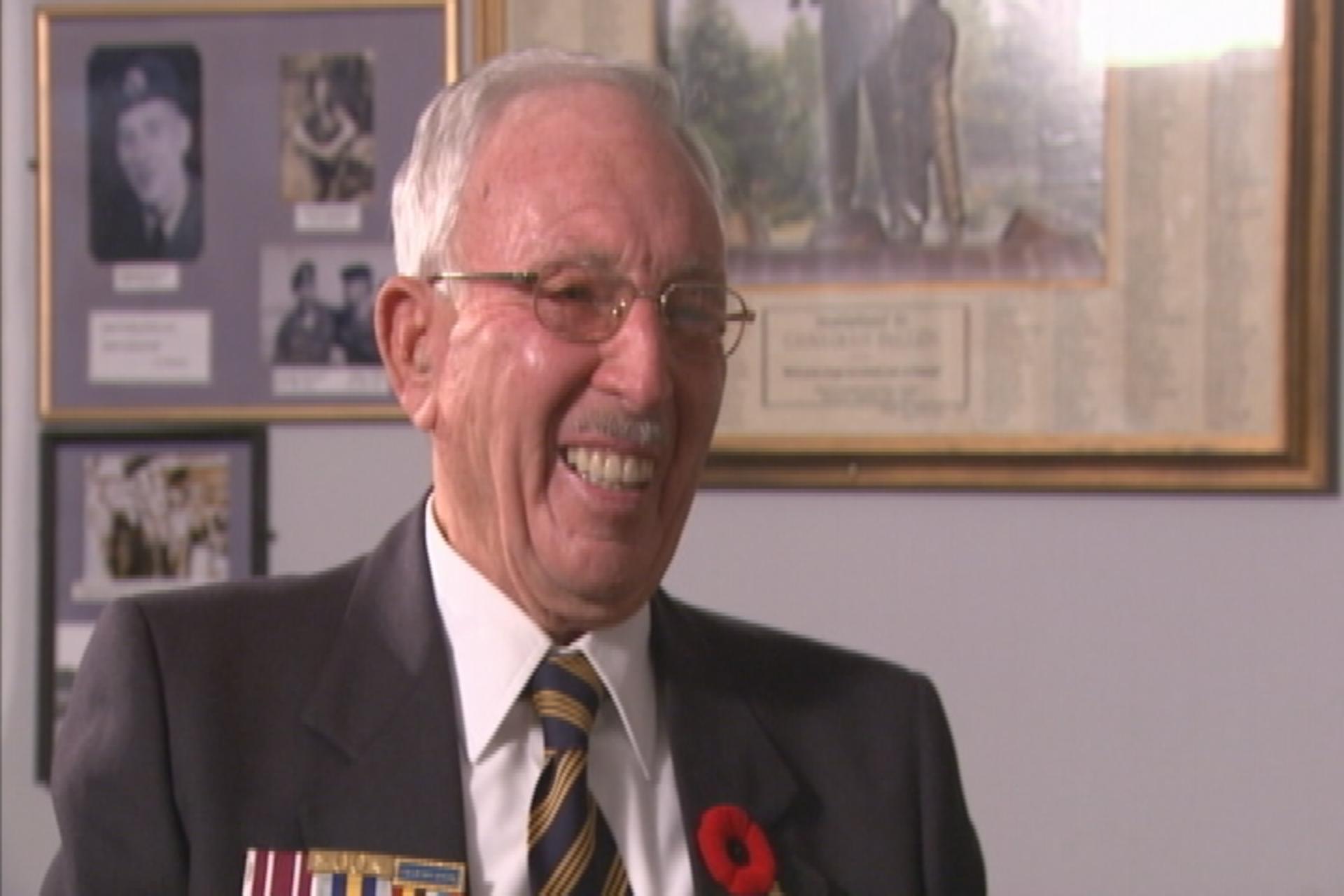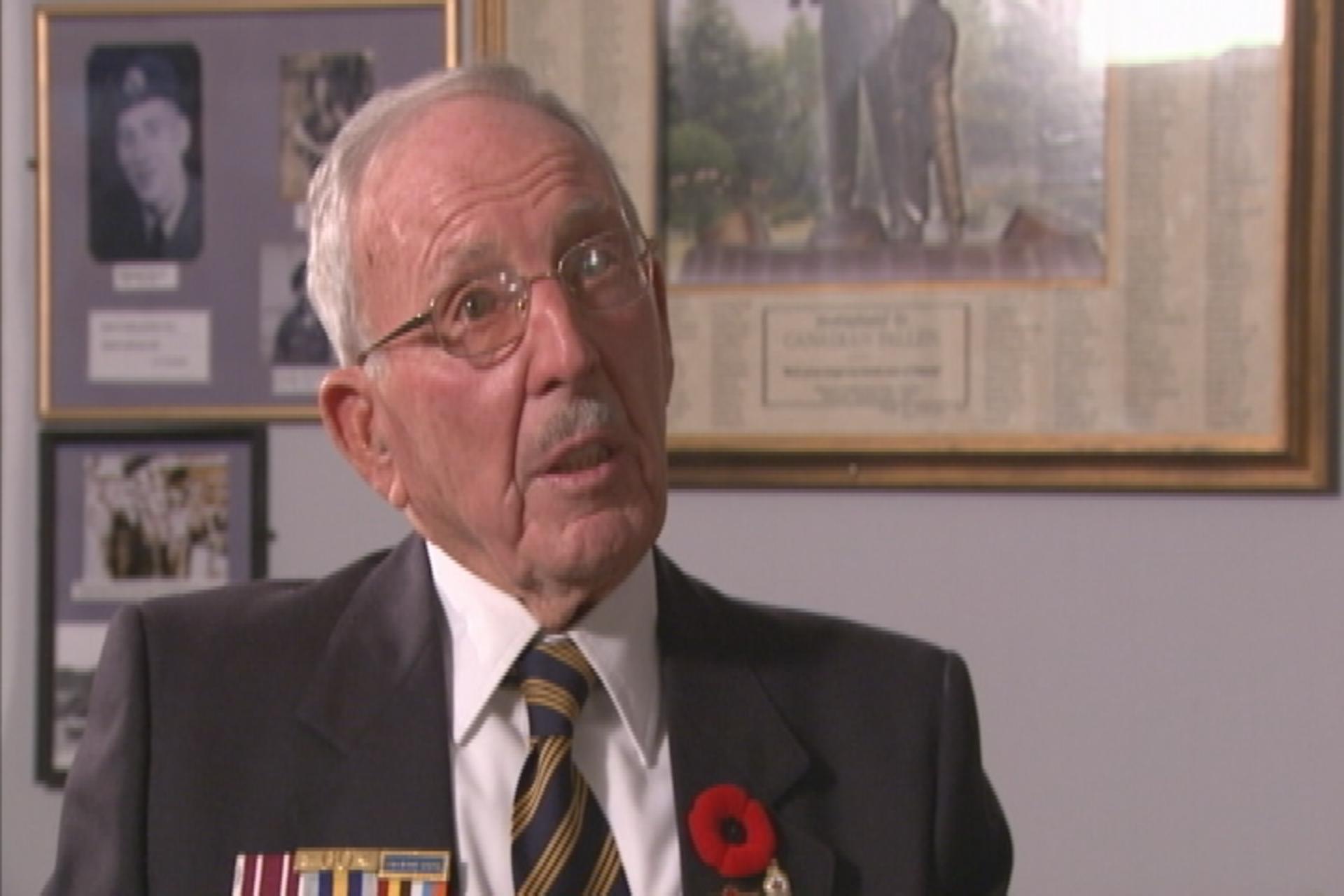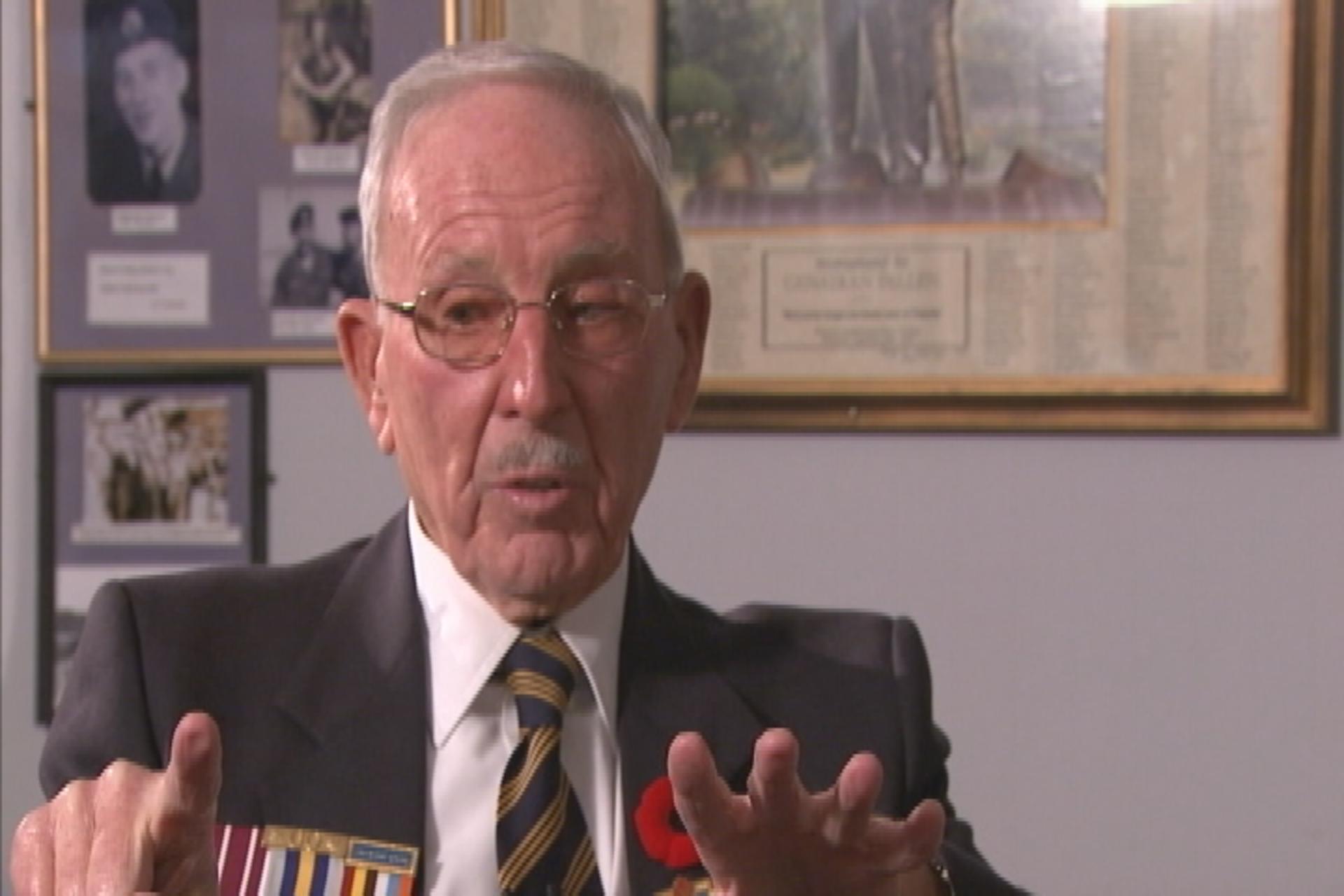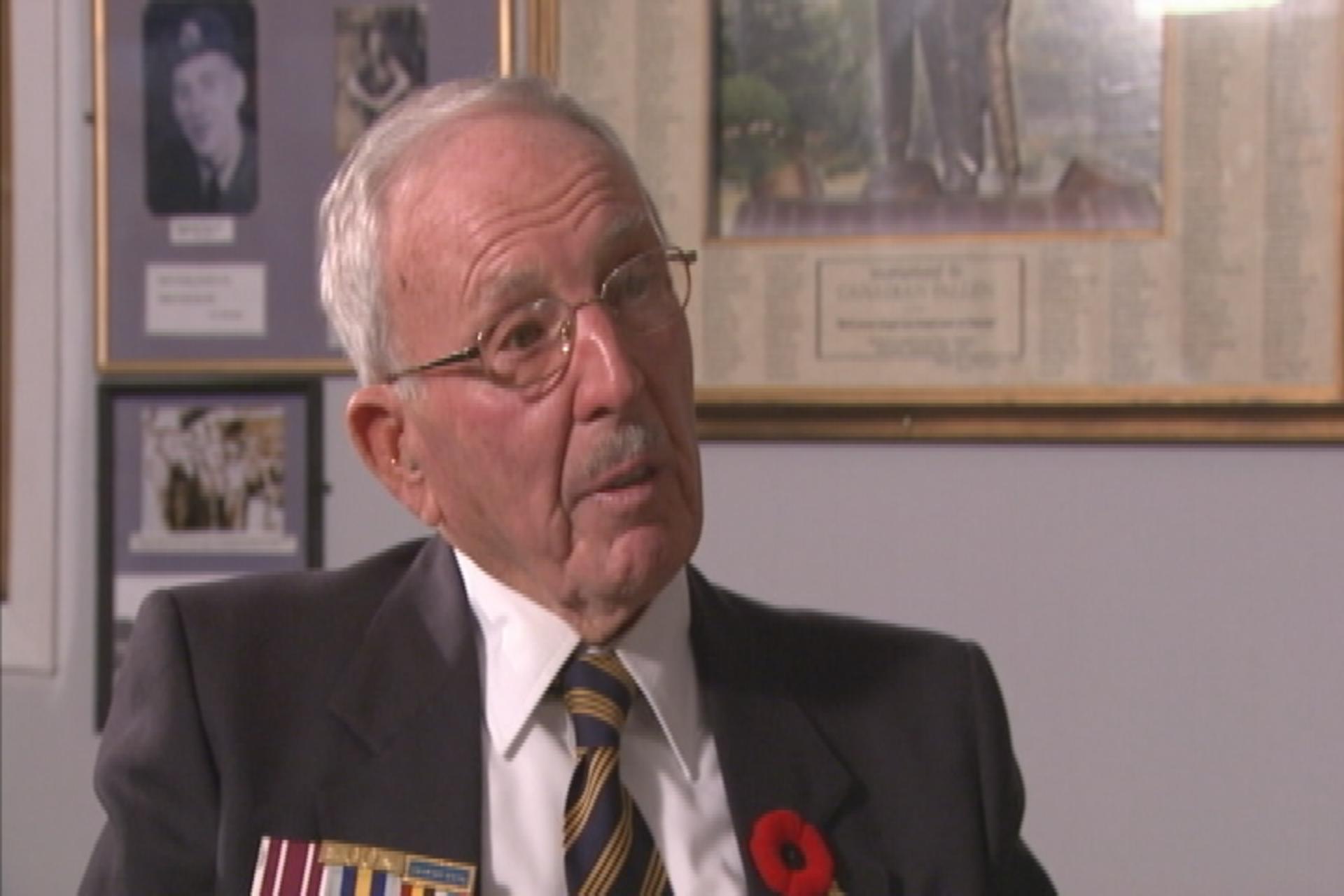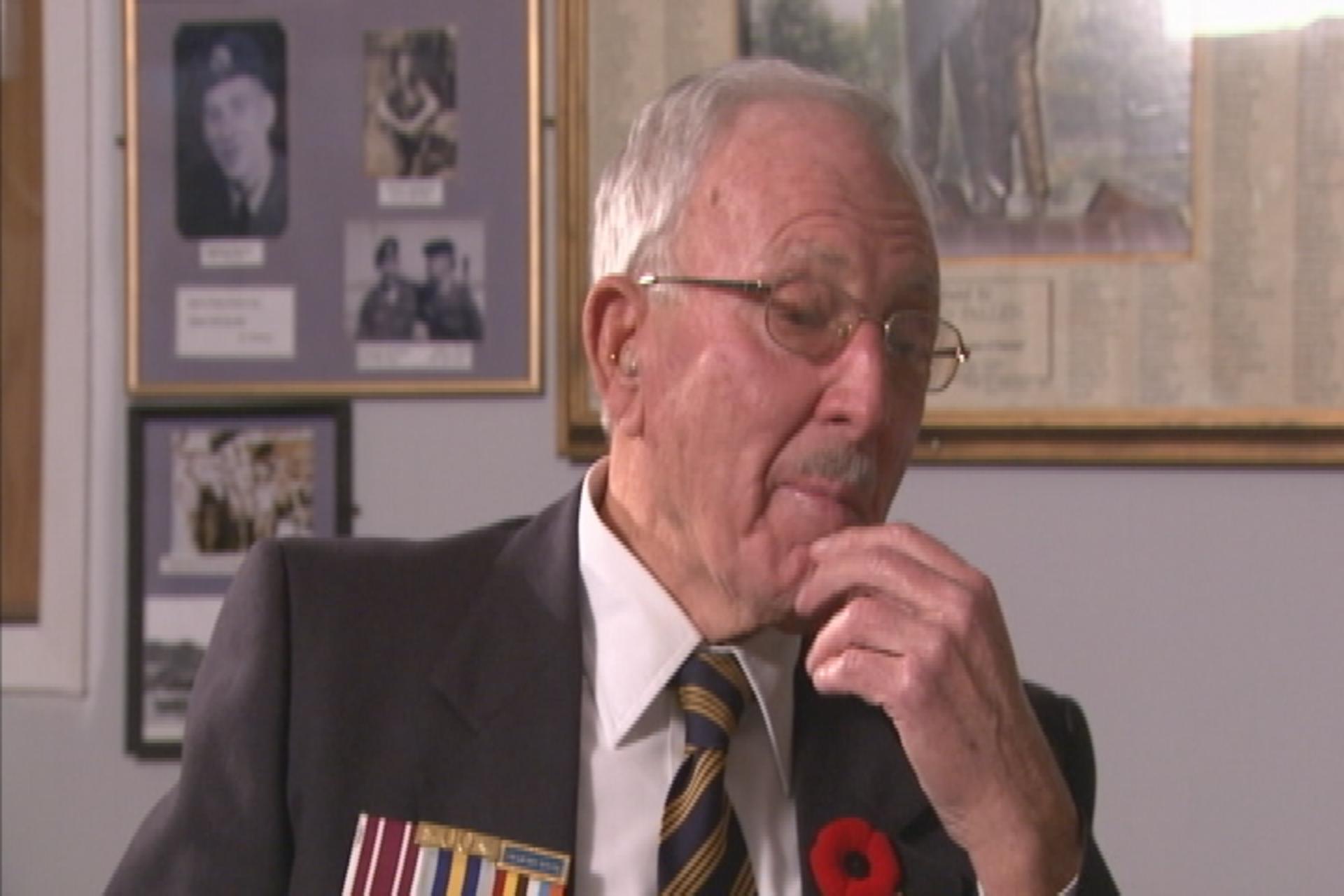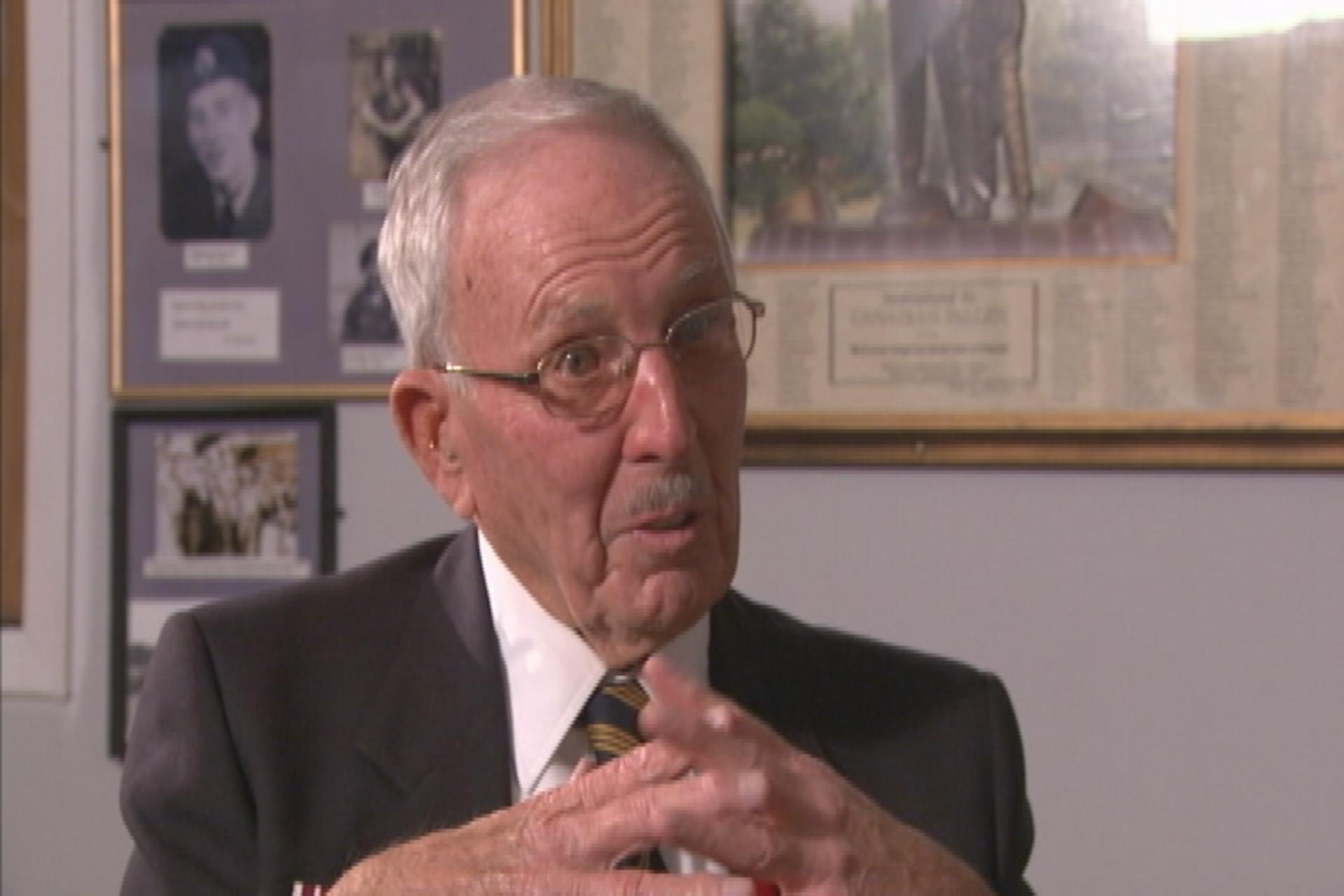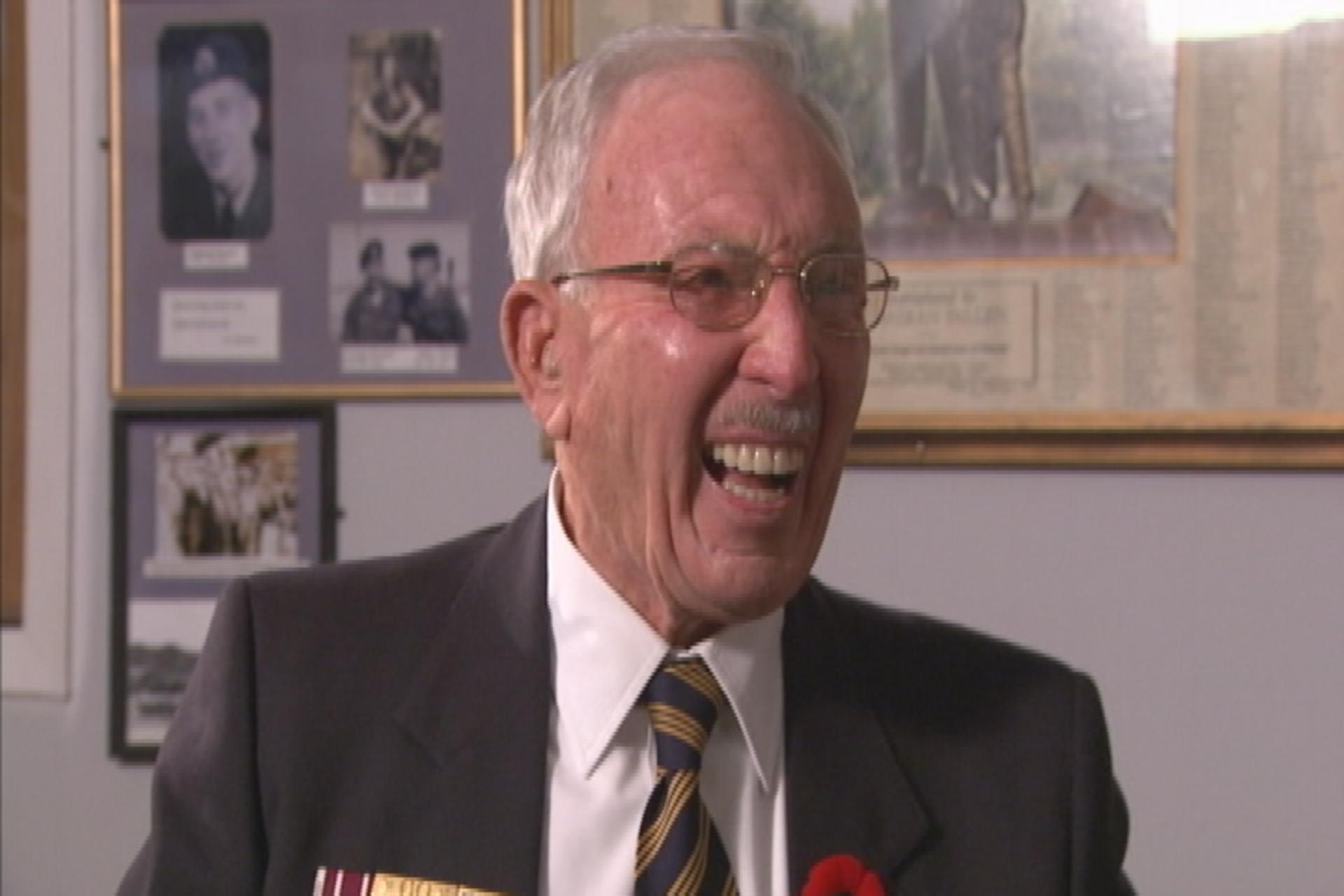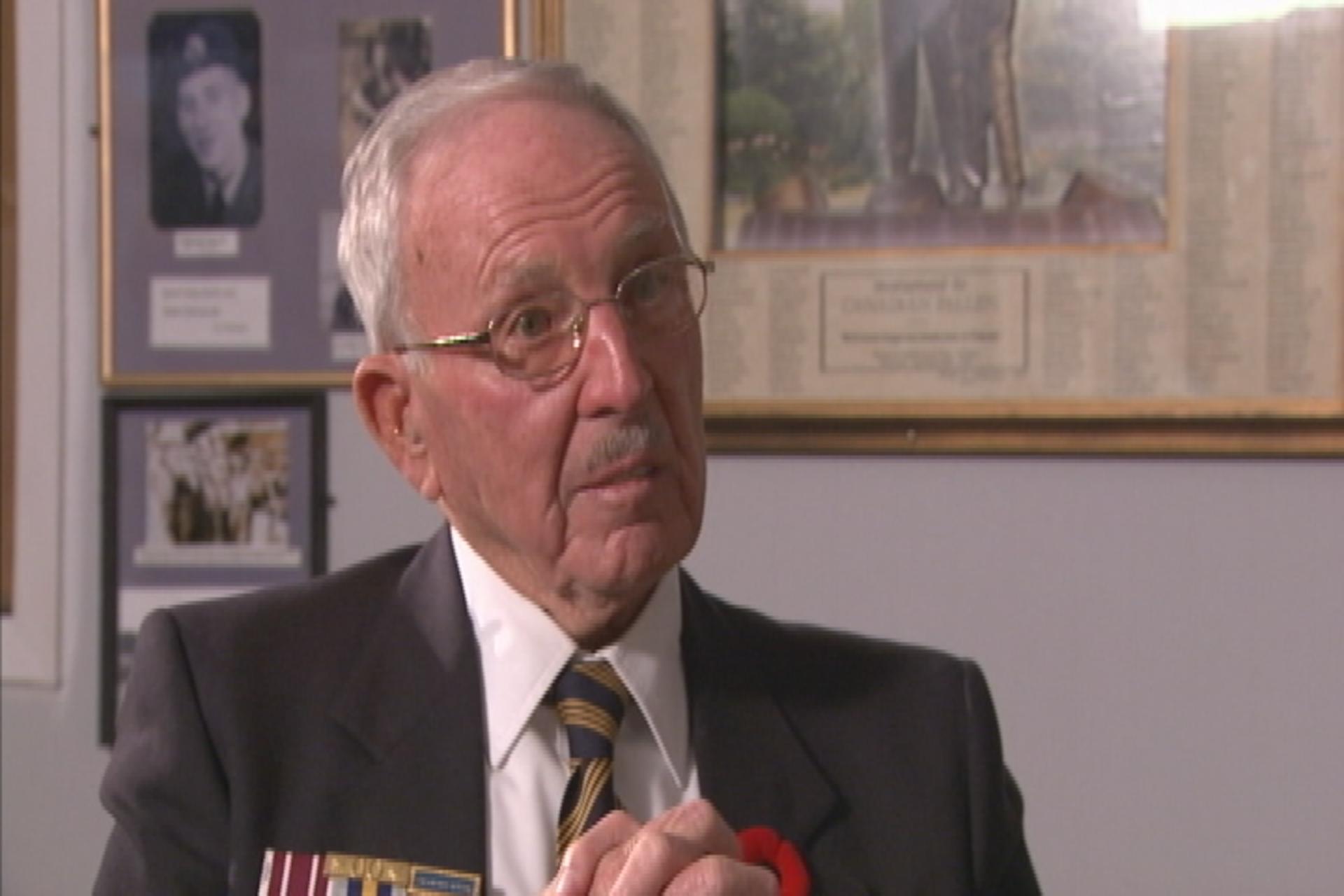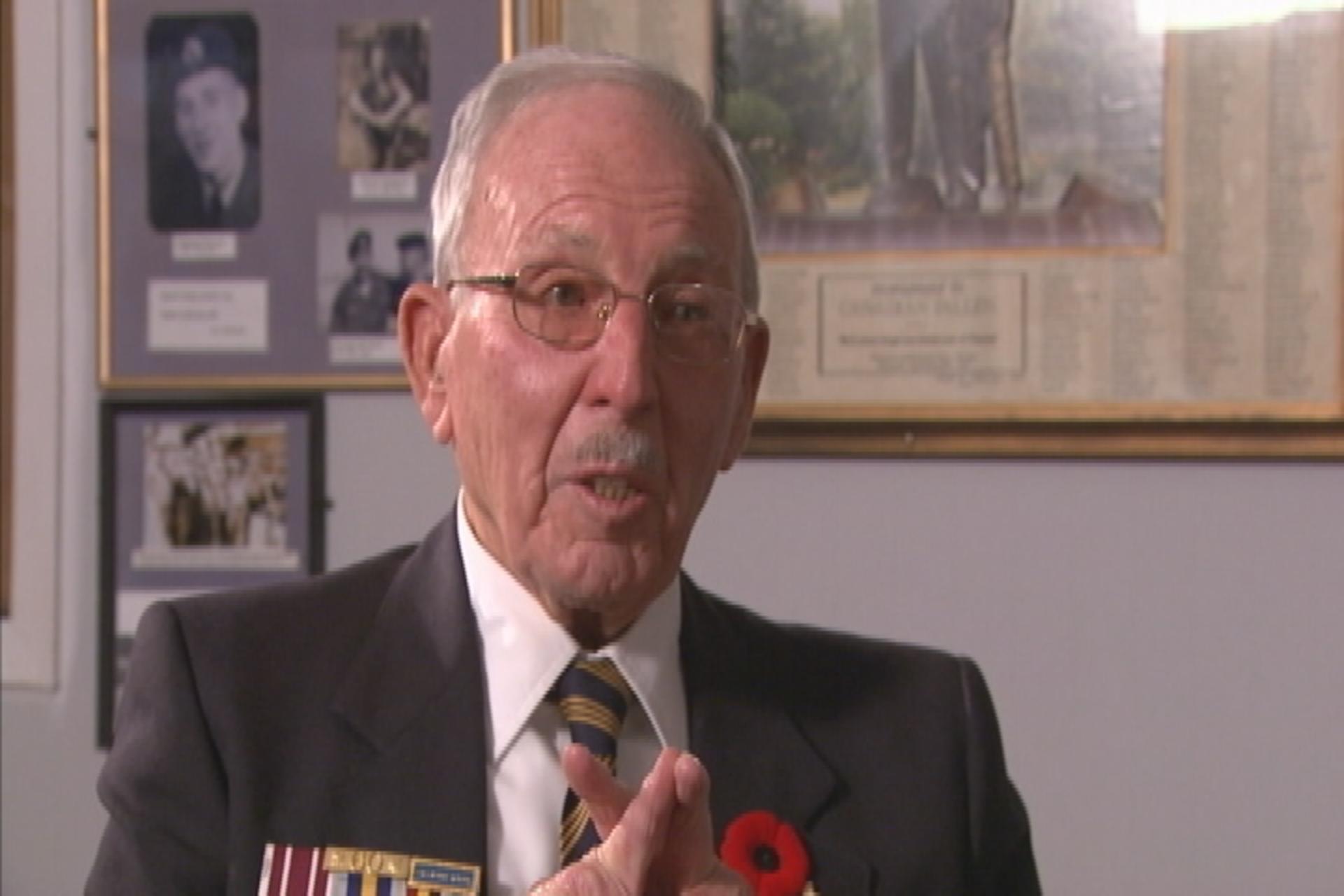Artillery Fire Towards the Enemy
Heroes Remember
Artillery Fire Towards the Enemy
Transcript
One of our guns got a, the bunker got a direct hit one night.
It wasn’t a heavy shell, it was a light one. But as it happened it
wasn’t the gun I was on, it was the next one. None of the
fellows, shall we say, shocked but they weren’t wounded too much
because they had that much more clay and sods and rocks and
everything on the top of their bunker but it blew the top right
off the bunker. So like I say, the next morning there was no
trouble to see every gun crew was out then making the top of
their bunker that much thicker. Artillery don’t usually come
under small arms fire not like machine gun will, their biggest
worry is the shells coming or getting bombarded shall we say.
The most action was about dusk. That’s when things happened.
The China man had to sleep in the night time by the same token
we had to sleep but it was doing about dusk, anything going to
take place it was around dusk. Once they fired at you well they
would move then and you couldn’t see them moving see.
But every four guns, they got what you call a command post.
A command post is a troop command post and a battery command post and
brigade command post. Well, the brigade command post, he knows,
shall we say, we’re holding down, shall we say ten miles of the front
well the brigade command post, he knows the position of
every gun on that brigade and if he wants, shall we say, the
Canadians to fire which would be us, Fox battery, well we just
get orders, “Fox battery.” By the same token if they wanted to
fire themselves well they’d use the brigade headquarters.
In the artillery, you don’t see what you are shooting at. You know
they are over the hill but all you do, you get, shall we say, an
aiming point by figures and you got a dial set on your gun and
you put down so many degrees north, 33 degrees west and so many
east and then the barrel would be moving all the time. And then
when you line up these figures and everything and the bubbles on
your gun and you waited then and the observation officer if he
wanted to have a shell fired, he’d say, “Fire” and that would
come down through command, “Boom” and then he’d say, he could
see then, the observation officer would see where that shell landed.
Well, then if the shell landed a bit short or over the target
well then he’d make a correction on his reference, shall we say.
I wouldn’t know what I’m shooting at, I just take the figures,
put them on a dial sight and check our aiming post and
the layer, he’d pat his leg like that, “He’s ready.”
Then I just press the button on the thing and say “I’m ready,” and
the command post would say he’s ready, then you’d wait and the
officer would say, “Fire,” again. Well, then if he was a bit
still off target well he’d make another correction but he
usually hit the target whatever he was shooting at on his third shell.
Description
Mr. Mercer recounts some of the tactics and scenarios used when firing artillery towards the enemy.
Leslie Mercer
Mr. Leslie Mercer was born June 24, 1927 in St. John’s, Newfoundland. Being a child of the Great Depression, he went to work at the dockyard at a very young age. He was too young to volunteer for the Second World War but when the Korean War broke out he was quick to join with the Special Force. He became part of the Royal Canadian Horse Artillery as a bombardier. After spending a year in Korea, Mr. Mercer returned to St. John’s, Newfoundland, married and raised a family.
Meta Data
- Medium:
- Video
- Owner:
- Veterans Affairs Canada
- Recorded:
- November 10, 2015
- Duration:
- 3:51
- Person Interviewed:
- Leslie Mercer
- War, Conflict or Mission:
- Korean War
- Location/Theatre:
- Korea
- Battle/Campaign:
- Korea
- Branch:
- Army
- Units/Ship:
- Royal Canadian Horse Artillery
- Rank:
- Bombardier
Related Videos
- Date modified:



